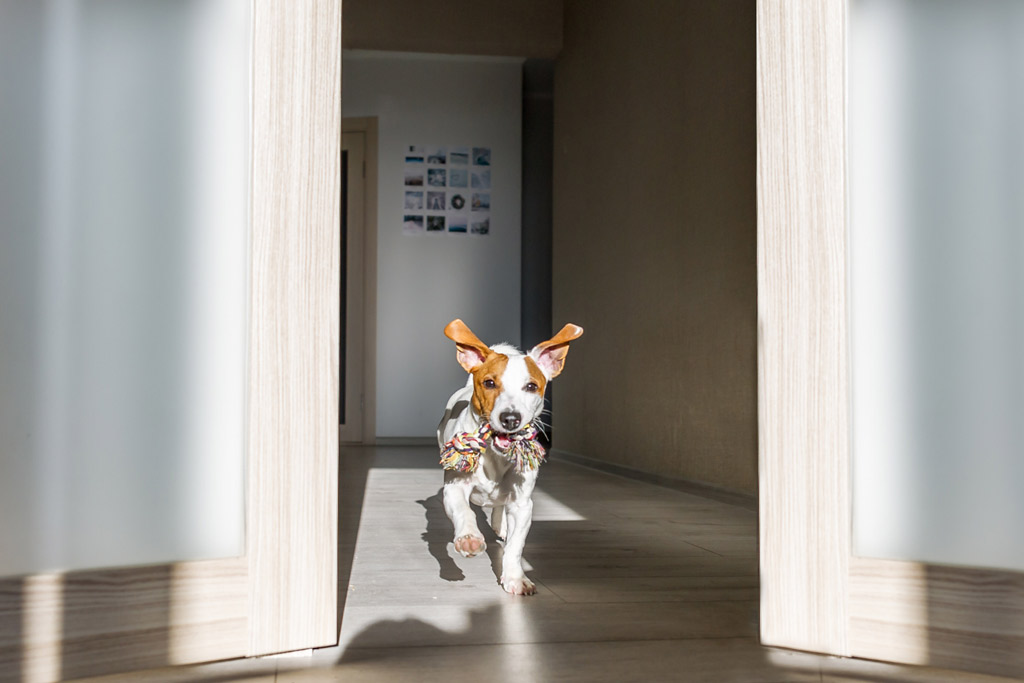
There are a few reasons why you might not be able to exercise your dog outdoors, and the most obvious one is the weather (it’s either too cold, too hot, or too rainy. In some places, all of that can even happen in one day!).
If you are wondering what else you can do apart from walking your dog when the outdoors isn’t an option or isn’t ideal, you’re in the right place!
Apart from the weather, there might be other things that prevent you from stepping out, such as:
- Recovering from an illness or surgery.
- A family member is sick at home and shouldn’t be left alone (your kid for example).
- It’s just been a very busy day at work and you are simply exhausted.
- Or other restrictive factors not within your control!
Feeling regret or even guilt at not being able to walk your dog is not something you should beat yourself up for!
As a caring dog parent, you naturally want the best for your pooch and the daily walk routine is a big part of that care.
The good news is that you can still exercise your pooch indoors/at home and still have some fun whilst you are at it! It’s a win-win (even though your dog is likely to show their displeasure at not getting out for the daily routine, they’ll still enjoy the activities and love the time together).
Here’s what you’ll discover, including a list of activities, games and more:
Playing with your dog and training her is a great way to keep your furry friend mentally and physically stimulated.
Plus, apart from spending quality time together, it is a great opportunity to reinforce basic obedience, practice commands, and strengthen the bond you share.
Sometimes, you just can’t or don’t have time to go for a walk, and that’s fine as long as you can spend some time playing with your pooch.
What’s important for you to know is how essential exercise is for your pooch and to find a way to provide your dog with this fundamental need, that works for you 🙂
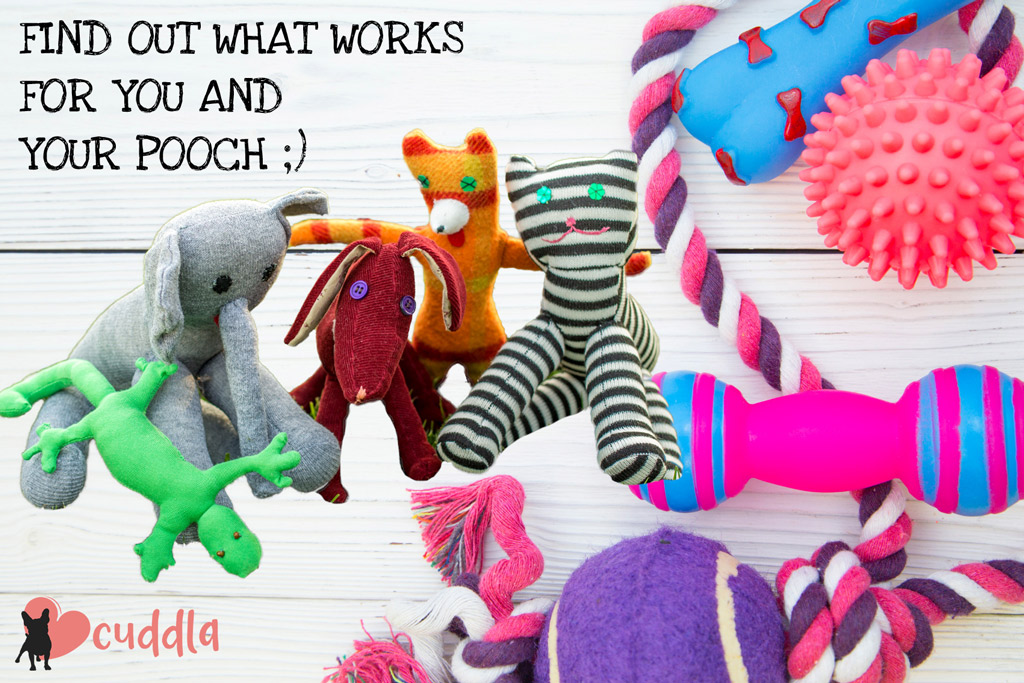
Why Dogs Always Need Exercise
No matter how big or small your dog is, or how young or old, they all need exercise to maintain their health.
Regular exercise helps your dog to:
- Expend their energy, so they can be more chilled at home.
- Reduce unwanted behaviours related to boredom or anxiety.
- Maintain cardiovascular health.
- And last but not least, have fun!
Of course, different dogs require different levels of activity (check out How Often Should I Walk My Dog? and How Much Exercise Does a Dog Need? blog posts to learn more about your dog’s energy level and how much exercise and walking she needs).
But, have you ever noticed your dog is quite energetic after a brisk walk but completely drained after a short training session?
That’s because just 10-15 minutes of mental stimulation, (an activity that requires your dog to concentrate and process information), is as physically exhausting as a half-hour of moderate exercise, like walking or playing.
So, next time the weather isn’t cooperating, give dog exercise indoors a go!
Dog Game, Activity and Toy Preferences
Depending on your dog’s breed and personality, your pooch might be more attracted to certain activities and play with certain toys.
Note: In How to Choose a Dog Toy blog post, I go through the steps to help you select the right toy for your pooch.
According to what dog group your pooch belongs, this table will help you understand your dog’s natural instincts and what activities, games and toys she might prefer.
| DOG GROUPS | BREEDS | SENSE, INSTINCT | GAME, ACTIVITY, TOY |
| The HoundGroup | Beagles, Dachshunds and Bassets. | Scent tracking and prey sighting. | Puzzle toys, chase or fetch. |
| The Herding Group | Collies, Shepherds, Corgis and Heelers. | Protecting livestock. | Flying disc, herding, obedience and agility. |
| The TerrierGroup | Jack Russells, Scotties, Staffordshires, Airedales, etc. | Pest control. | Tug, digging, puzzles and obedience. |
| The Non-Sporting Group | Bichons Frises, Boston Terriers, Dalmatians, Poodles, Lhasa Apsos, Bulldogs, Shiba Inus, etc. | No longer perform the duties for which they were originally bred. | Varies depending on the dog’s breed. |
| The Sporting Group | Pointers, Setters, Retrievers, Vizslas, etc. | Hunting dogs: finding, pointing, flushing, holding and retrieving game. | Fetch, swimming, walking and hiking. Also, therapy dogs, assistance dogs, and search and rescue dogs. |
| The Working Group | Alaskan Malamutes, Siberian Huskies Boxers, Akitas, Doberman Pinschers, Mastiffs, Great Danes, Dogues de Bordeaux, Rottweilers, Saint Bernards, etc. | Performing specific tasks for their owners. | Obedience and agility. |
| The Toy Group | Pekingese, Maltese, Chihuahuas, Miniature Pinschers, Papillons, Cavalier King Charles Spaniels, etc. | Companion. | Squeaky toys, tricks and games. |
Use my dog toy finder to see which toy will suit your dog the best.
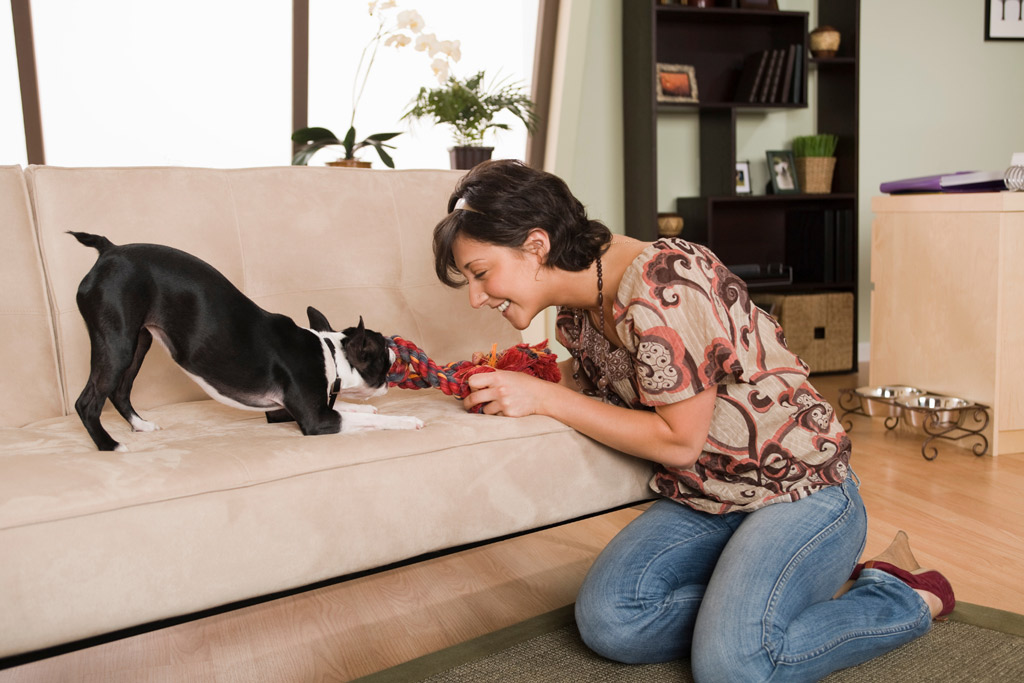
Dog Exercise Indoors
At this point, you are probably wondering how to tire out your dog without leaving the house or whilst staying indoors, right?
How to be active during bad weather? Here are 17 dog exercises, games and activities to keep your pooch physically – and mentally – active whilst staying indoors:
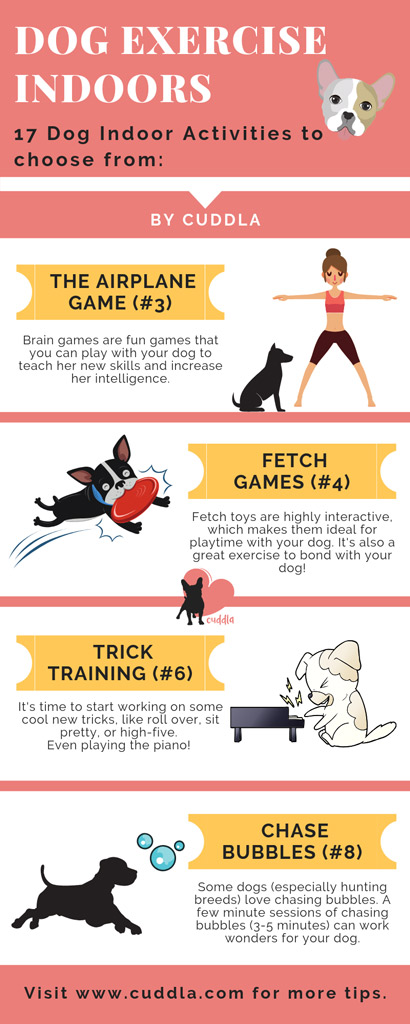
#1 – Name that Toy
Here’s how to play “Name that Toy” with your dog:
- Gather a selection of your dog’s favourite toys that are noticeably different from each other (a tennis ball, a rope toy, and a squeaky toy, for instance).
- Hold a toy up, one at a time, for your dog to see and sniff.
- Toss the first toy saying “Where is your ball?” to build excitement.
- When your dog returns it, praise her and maybe a small treat.
- Then do the same with the other two toys.
- Repeat this exercise, being consistent with the toy names, until your dog has mastered it.
- Take it up a notch by spreading out the toys and tell your pooch which one to look for.
Insider Tip: After playing with her toys, put them away. This helps your dog identify when it’s playtime and when it’s not. Also, your dog will view her toys as novelty when you bring them out. If your pooch has access the toy all day, she may be bored with it and not want to play with it next time.
For those of you that love to get your pooch toys often, you’ll find my favourite dog toys and treats useful, where I talk about safely made toys and healthy treats combo to get for your doggy.
However, if you cannot afford to get toys every month or you have no need since your dog doesn’t destroy them at all…
You could just hide some of them for a week or so and then present them to your pooch again. She will be more than excited to get her fav toy back!
Dog Exercise Equipment: a size-appropriate tennis ball, a rope toy, and a squeaky toy, for example (Amazon links).

#2 – Hide and Seek
Scent games like this one are excellent indoor activities that not only expend energy but also build confidence as well.
Do you remember playing hide and seek?
Hide and Seek with People
- Begin by having your dog stay in a room.
- Then quietly hide in another room.
- In an enthusiastic tone, call her name and give a “come” command.
- Reward your pooch with praise or treat each time she finds you.
- If you have kids, the whole family can take turns playing the game by hiding in various places in the house.
Hide and Seek with Treats
- With your dog watching you, toss a few small treats onto the floor.
- Just as your dog runs to eat them, say “go find it!”
- After a few tosses, start placing the treats inside boxes, in corners, or on low shelves (i.e., nothing above your dog’s nose level).
- Again use the “go find it” cue when she goes to get them.
- Take it up a notch by putting your dog in another room while you hide the treats. At first, use the same locations from before to guarantee your dog’s success in finding them.
- Then, allow your dog back into the room and say “go find it!”
- Finally, if your doggy has trouble finding your hides, you could either:
- Stand in the vicinity of the hidden treat.
- Or toss some additional treats in that direction to encourage her.
Insider Tip: As a final prize to this scent game, you could go all out to thrill your dog and hide a big meaty bone or long-lasting chew treat from her to find and then enjoy.
Dog Exercise Equipment: none, just treats 😉
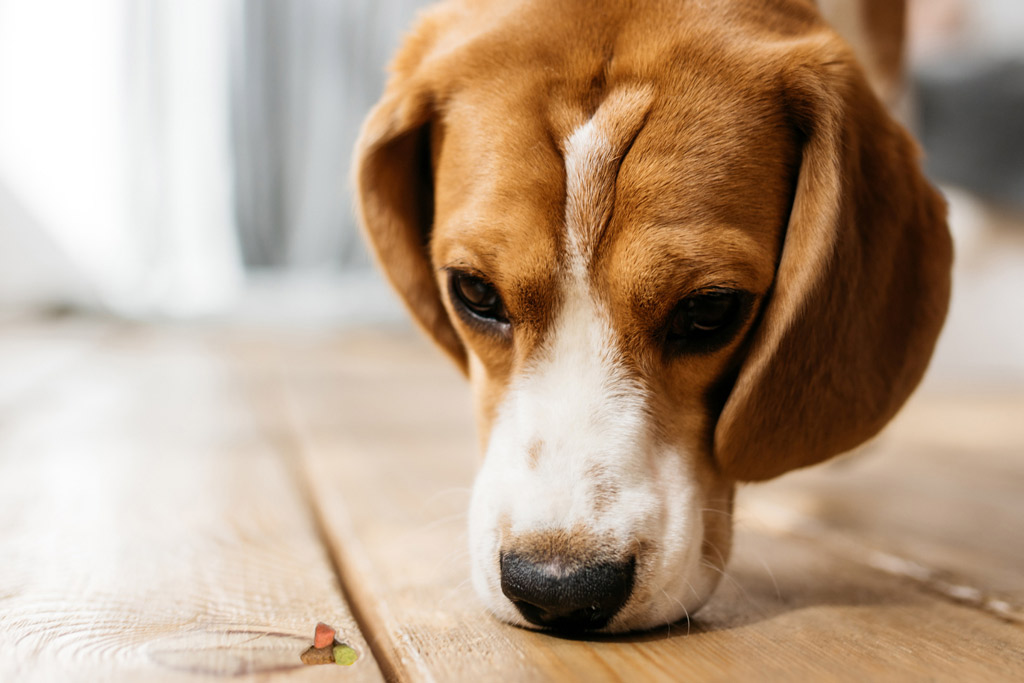
#3 – The Airplane Game
Brain games are fun games that you can play with your dog to teach her new skills and increase her intelligence.
- Find a quiet area with few distractions.
- Hold a treat in one of your hands, letting it protrude from your fingers so your dog sees it.
- Then, stretch your arms out as though you were an aeroplane while keeping the cookie in clear view.
- Your dog could be either staring at the treat or barking, jumping… to get it. Just ignore her and wait patiently until she looks into your eyes.
- The moment she makes eye contact with you, say “yes” and let the treat fall to the ground so she can get it.
- Repeat as many times as you like since it’s a great way to reward your dog for paying attention to you.
Dog Exercise Equipment: none, just small treats that fit in your hands 😉
However, your puppy at home may imprint on you when he’s between 3 and 12 weeks of age. As a result, he will view you as his mother or a person he can trust.
Have a look at the Airplane Game in action:
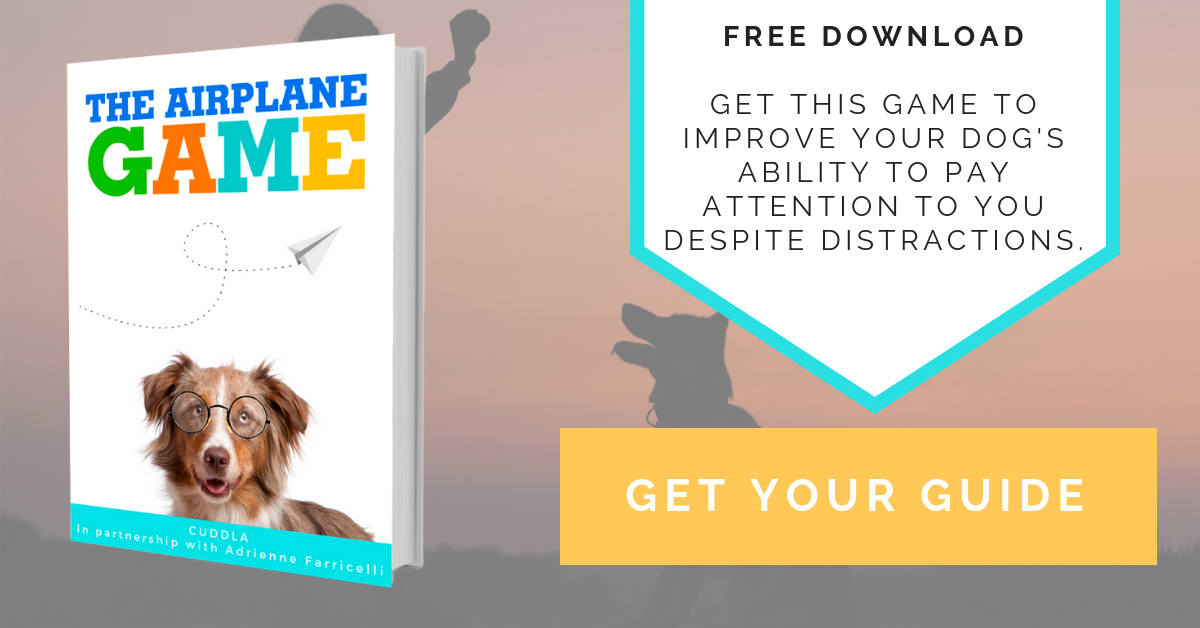
#4 – Fetch Games
Fetch toys are highly interactive, which makes them ideal for playtime with your dog. It’s also a great exercise to bond with your dog!
Many puppies love fetching balls or catching frisbees. Others love to chase after soft toys. And some dogs love things that bounce around unpredictably, making them more challenging to go after.
As Dominic Hodgson says, “You want to discover what your dog’s kryptonite is”.
i.e. which toys she loves the most, then let your dog play with her favourite ones during playtime session. It will be a great reward for her!
Playing fetch in the hallway:
- Stand at one end of a hallway with your dog.
- Then toss the toy to the other end of the hallway. For senior dogs, you can tone down the game by rolling the ball down the hall.
- Shower your dog with cuddles and an occasional treat when she brings the toy back to you and drops it.
Dog Exercise Equipment: a tennis size ball, a soft toy that’s easy to throw, or a bouncy toy your dog likes.
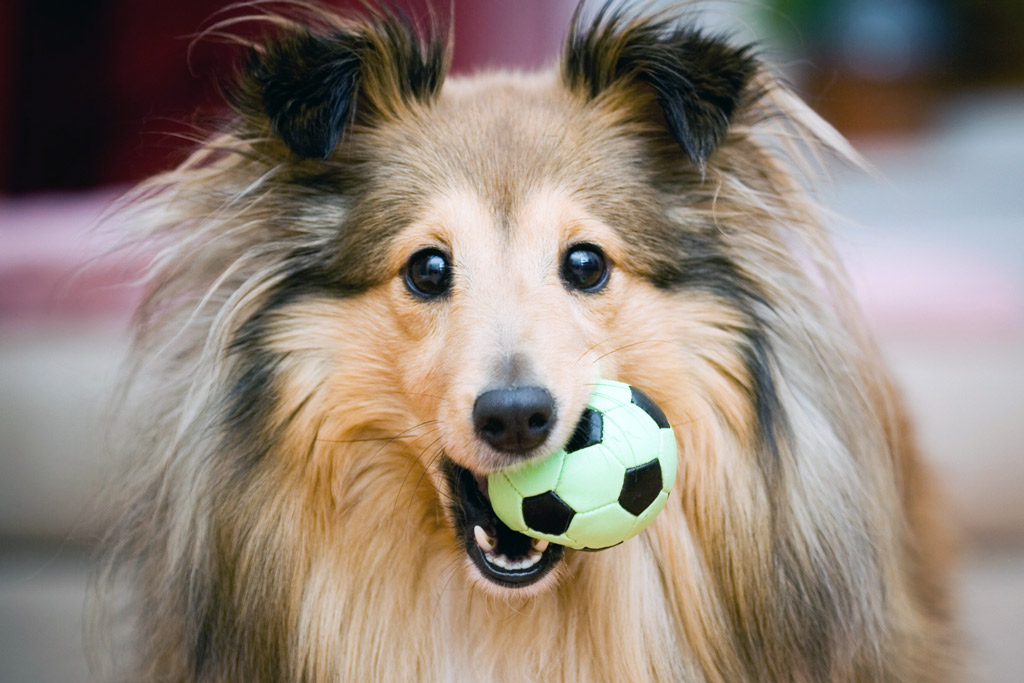
#5 – Tug Games
A good game of tug doesn’t take up a lot of room, but it does use up a lot of your dog’s physical energy!
Also, it’s a great game that allows you to practice commands during the game and a suitable avenue for a dog’s inherent need to bite and chew (potentially preventing destructive behaviour at home).
For a safe tug game, play with a set of rules that your dog understands and follows (i.e., a structured game of tug).
- Bring out the tug toy.
- Tell your dog when to engage with the toy on command (“get it”).
- Play tug moving the toy from top to bottom, or vice-versa.
- Then instruct your pooch to release the toy on command (“ drop it”).
- Alternatively, you can practise some commands such as “sit” or “down” in between tugging sessions.
- Repeat steps 2 to 5 for up to 5 minutes.
- To finish the game, tell your dog to “drop it” and reward the dog with a treat and immediately put the tug toy away until the next game.
Since tug games are mentally and physically tiring for dogs, you should play in short intervals (5mins or less) and gradually increase the length of the game.
Also, if you play for too long, your dog will lose interest and wander away.
Dog Exercise Equipment: a tug toy, rope (less lasting), rope with rubber bone (more durable), or a toy with two ends will do!
P.S. Look for tug toys that are durable enough to stand up to rigorous pulling and long enough that you can safely hold onto one end while your dog pulls on the other.
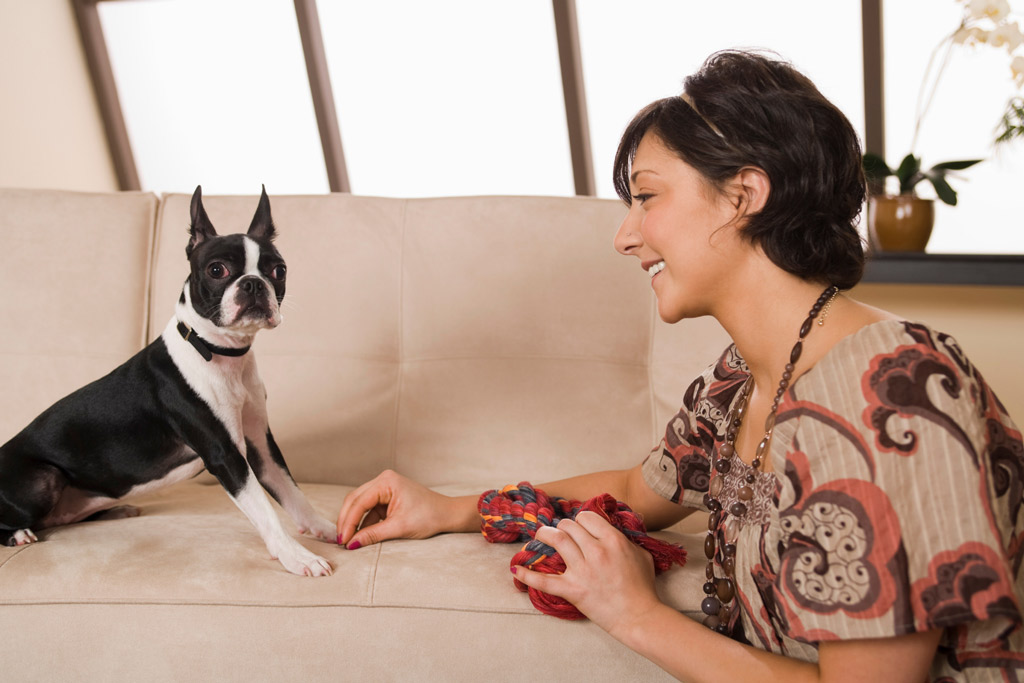
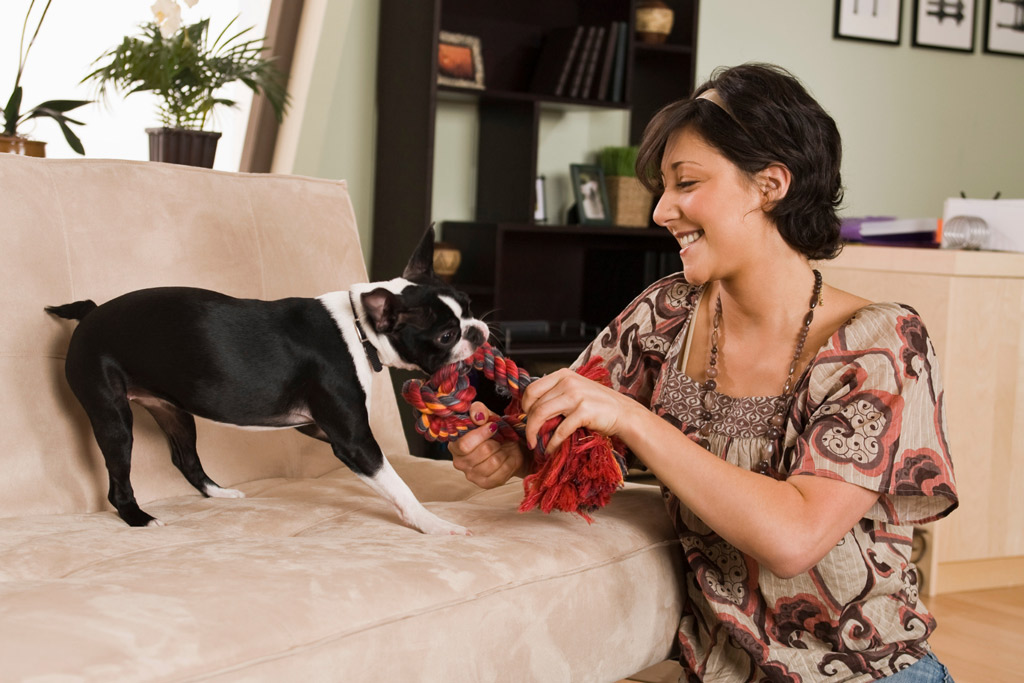
#6 – Trick Training
You should continue training your dog and teaching her new tricks, no matter the age! A dog’s brain never loses its ability to learn new things so long as you give it a chance.
Once your dog has mastered basic commands, it’s time to start working on some cool new tricks, like roll over, sit pretty, or high-five.
They say that the tricks and skills many dogs can learn are limited only by their owners’ imagination. (and since you’re here, I think your imagination is limitless ;))
There’s nothing better than learning new things to keep your dog’s mind sharp throughout her life. The brain is like a muscle – if you don’t challenge it, it won’t grow!
That’s why the best way to keep your dog mentally active and smarter is by teaching her new tricks.
Especially if you want to teach your dog new tricks in a fun and highly rewarding way, you should check out my favourite training method. For instance, you could teach your pooch to tidy up her toys and play the piano! (as unbelievable as it sounds, it’s real and has been done; no jokes).
Insider Tip: Keep training sessions short – about 15 to 20 minutes – and always end on a positive note. For instance, if your dog hasn’t quite grasped the last trick, go back to one she knows well and end your session with that one instead and reward her thoroughly. This will make her excited about training and looking forward to the next session.
Finally, training will strengthen your bond and communication skills with your pooch.
Plus, you will have some great fun showing off to everyone else what you have taught her and she will LOVE being rewarded for learning new commands and tricks. WIN-WIN.
Dog Exercise Equipment: none.
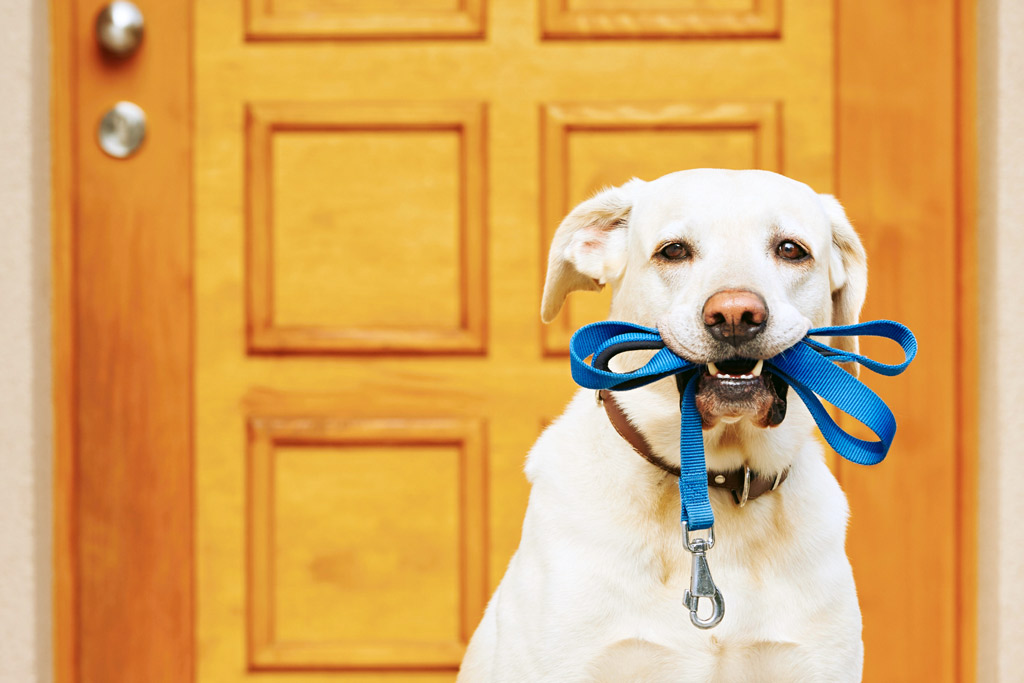
#7 – Obstacle Course
Setting up an obstacle course for your furry friend is another great challenge and a great agility exercise.
The goal is to create a circuit for your dog to run along and jump over things. You can use things that you have at home to build one: cushions, chairs, a hula hoop, etc.
- Create a tunnel (possibly in the hallway) or a route where you can place small obstacles.
- If your dog needs encouragement, guide her through this tunnel of obstacles for her to jump over.
- Reward your dog with a treat and some cuddles.
Dog Exercise Equipment: hula hoops, dog agility tunnels (especially the ones that can be flattened to store), and free-standing weave poles (Amazon links).
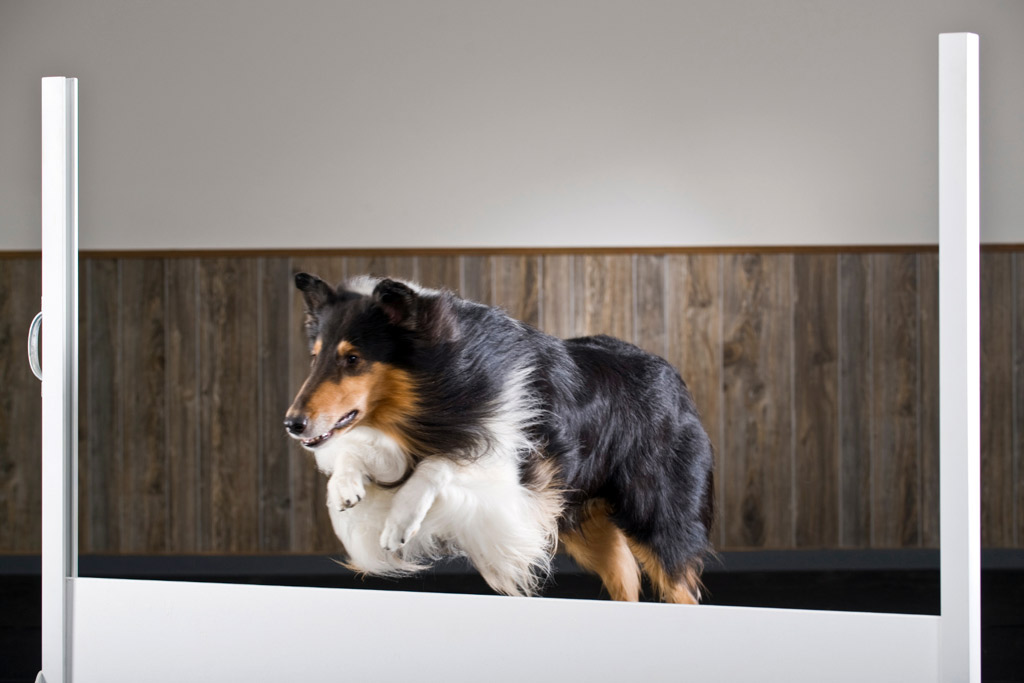
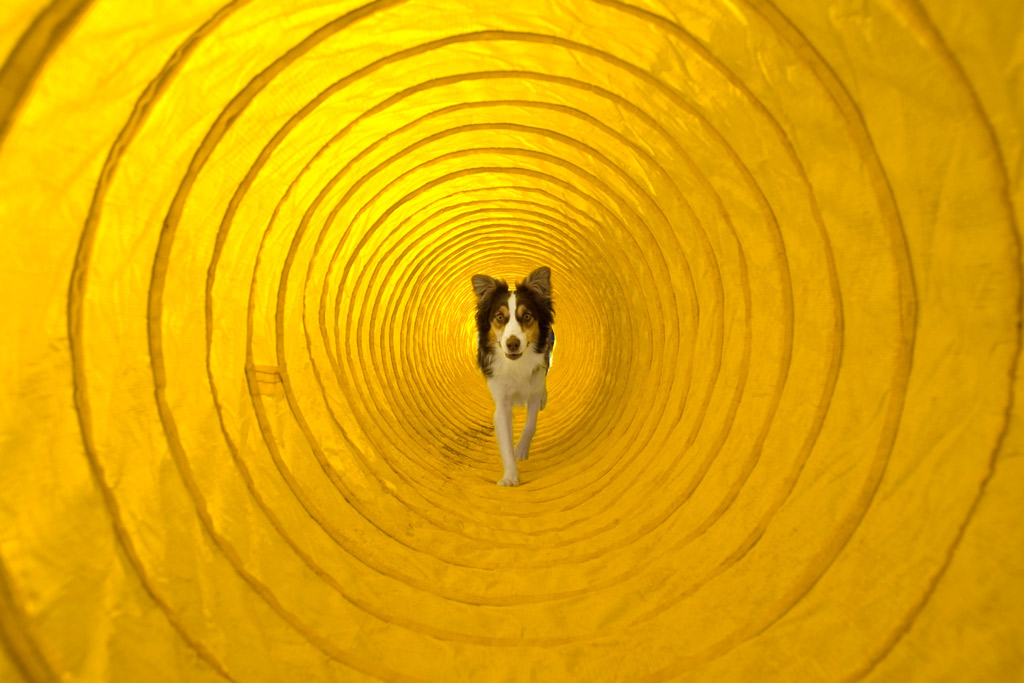
#8 – Chase Bubbles
Dogs with a strong prey drive (hunting breeds) love chasing bubbles. A few minute sessions of chasing bubbles (3-5 minutes) can work wonders for your dog. Just whip out your bubble wand and let your dog pop them until she’s tired!
You can use bubbles made for kids, bubbles made for dogs or make your own, as long as they are non-toxic.
Regardless of which one you go for, do keep in mind that they can upset your dog’s stomach if they ingest too many. Also, bubbles can irritate your dog’s eyes, so remember to wipe off her face afterwards.
Because of these, I would limit the number of times to play this game or completely avoid it if your dog shows no interest in bubbles.
That being said, if your dog has no idea what bubbles are, here are some steps on how to teach your dog to chase bubbles:
- Start by blowing a couple at a time.
- Point to the bubbles and encourage your dog to chase them around.
- Catch some yourself to show your pooch that there’s nothing to worry about.
Dog Exercise Equipment: non-toxic bubbles (kid’s bubbles) or something more dog-specific, like bacon-scented bubbles or peanut favour bubbles (Amazon links).
Insider Tip: You can make your own bubble mixture using glycerin and water. The glycerin that is derived from animal and plant sources is generally considered ‘safe’ and used as a sweetener and binder in dog food.

#9 – Stairs
If you leave in a house that has stairs, you can definitely utilize them to exercise your pooch! It’s as simple as running your dog up and down the stairs 🙂
However, this is not a good exercise for some dogs, like senior dogs or doggies with arthritis and other joint problems.
Dog Exercise Equipment: none.
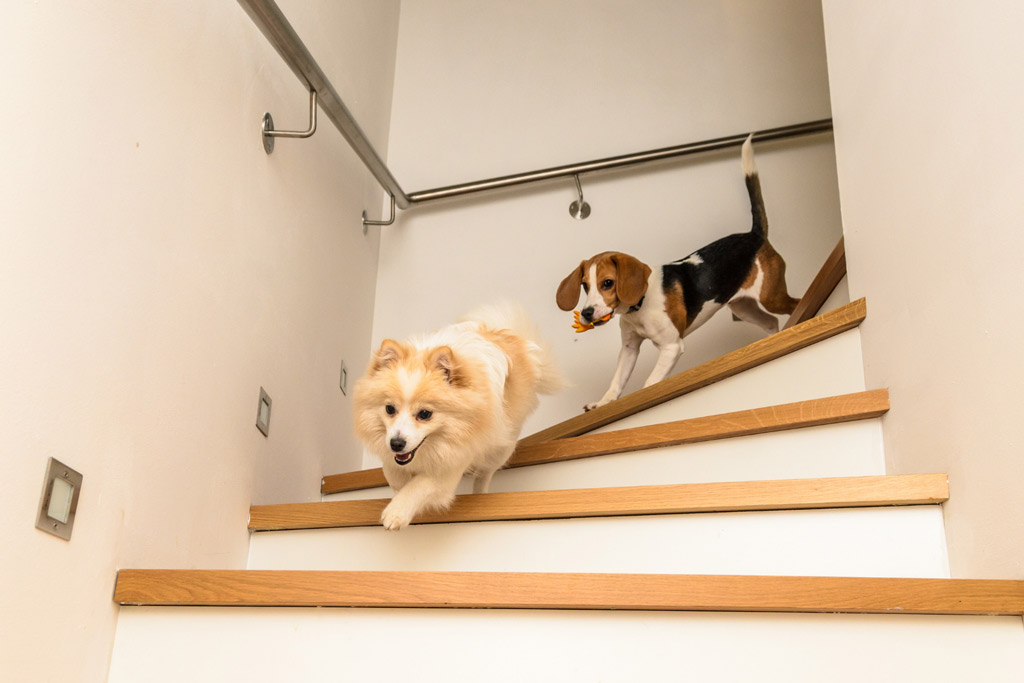
#10 – Push-Ups
Have you tried the doggy version of a push-up? It’s a great way to keep your dog focused on you, practise commands and get her to work out!
Note: Your dog will need to at least understand and respond to the sit and (lay) down commands.
This is how it works:
- First, ask your dog to sit.
- Then get her to a down position.
- And then go back to a sit.
- Repeat a few times.
- Once your dog is able to anticipate to your command, add a challenge by asking her to “stand” in between.
To reward your dog’s obedience, you can start by giving her treats after each command. Then, challenge your dog by giving her treats only after a sequence (sit, stand, down).
You can continue to vary the sequence and add reps between treats, making the exercise unpredictable and exciting for your pooch.
Dog Exercise Equipment: none!
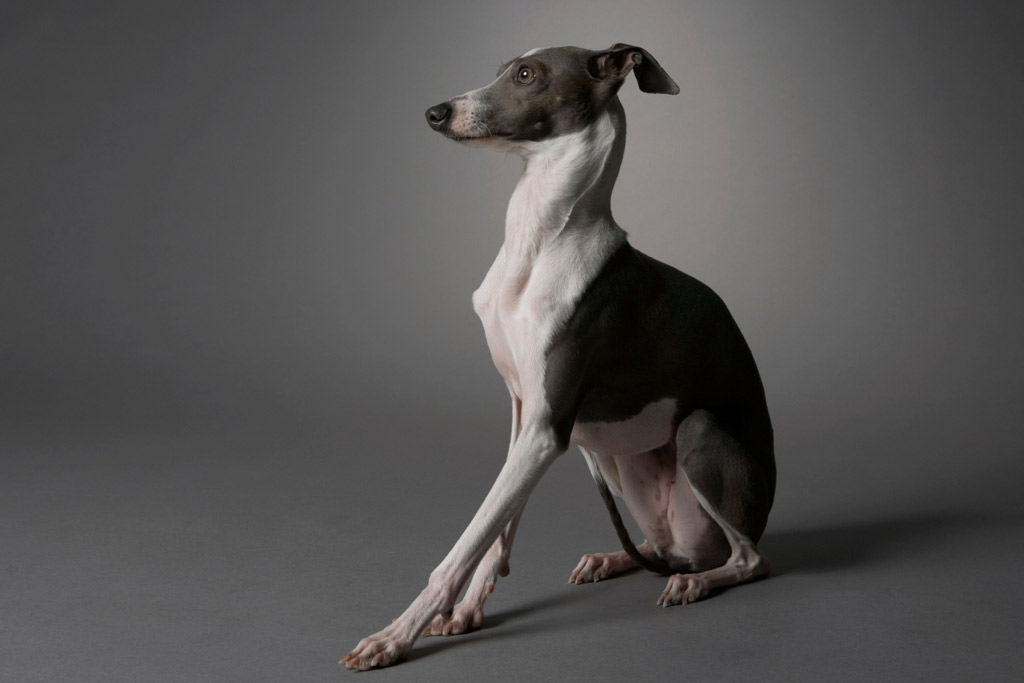
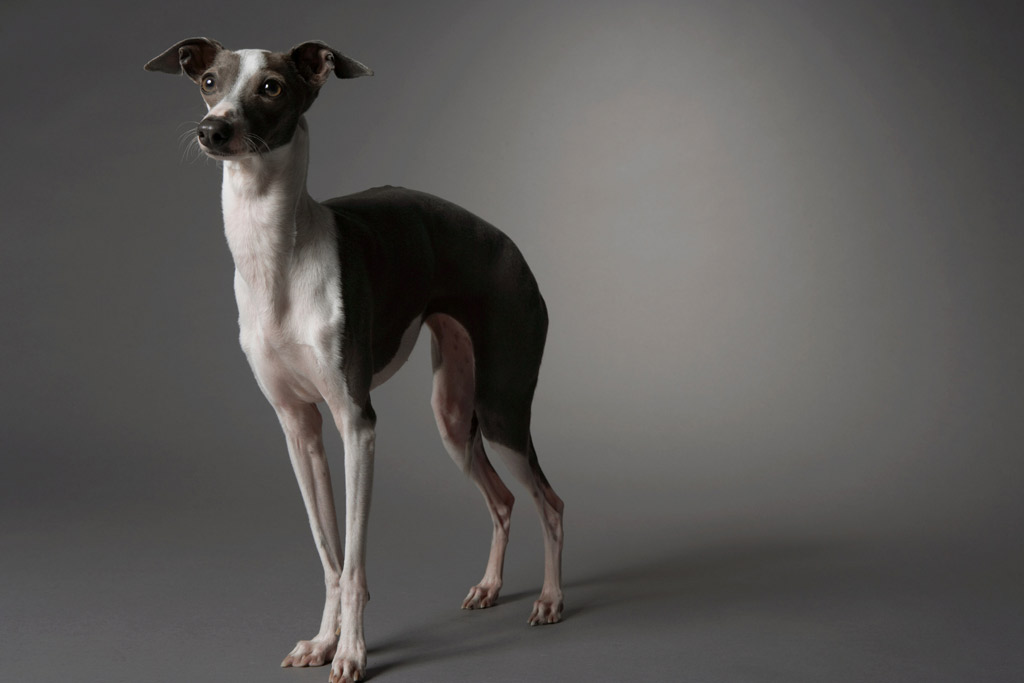
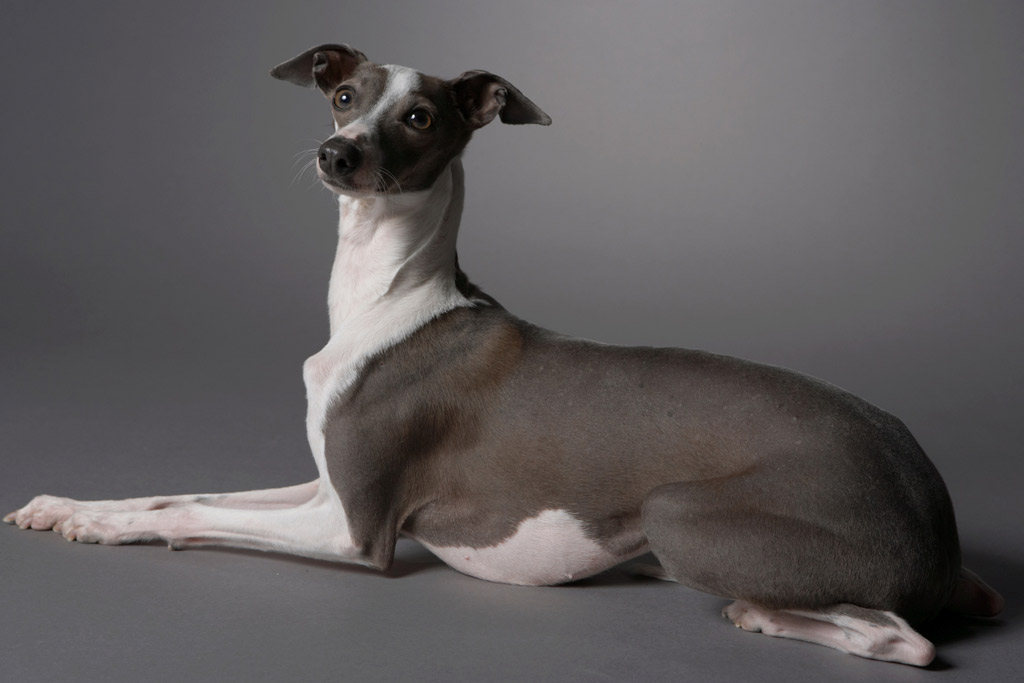
#11 – Treadmill
Yes, dogs can use treadmills, although preferably those designed specifically for them.
If you have a high energy dog and the weather is adverse to burn her energy outdoors, you might want to consider a treadmill as a supplement to her exercise routine.
However, while the treadmill is a great indoor substitute, nothing replaces the sights, sounds and smells of the outdoors! So, this advice is ideal for use only when you cannot exercise your dog outdoors.
All dogs will need a bit of training before using a treadmill:
- First, get your dog used to a dog treadmill when it’s turned off. Let her walk on it and sniff it.
- Then, turn it on at a slow pace.
- Gradually work your way up to a comfortable pace.
- Reward your dog’s progress with treats by giving them from the front end of the treadmill.
- You can walk your dog on a treadmill for 5-10 minutes per day, for example.
Be cautious and never leash your dog to the treadmill. Also, don’t leave your pooch unattended since it can be dangerous.
Dog Exercise Equipment: a treadmill specifically for dogs (Amazon link). Heads-up, they are not cheap!
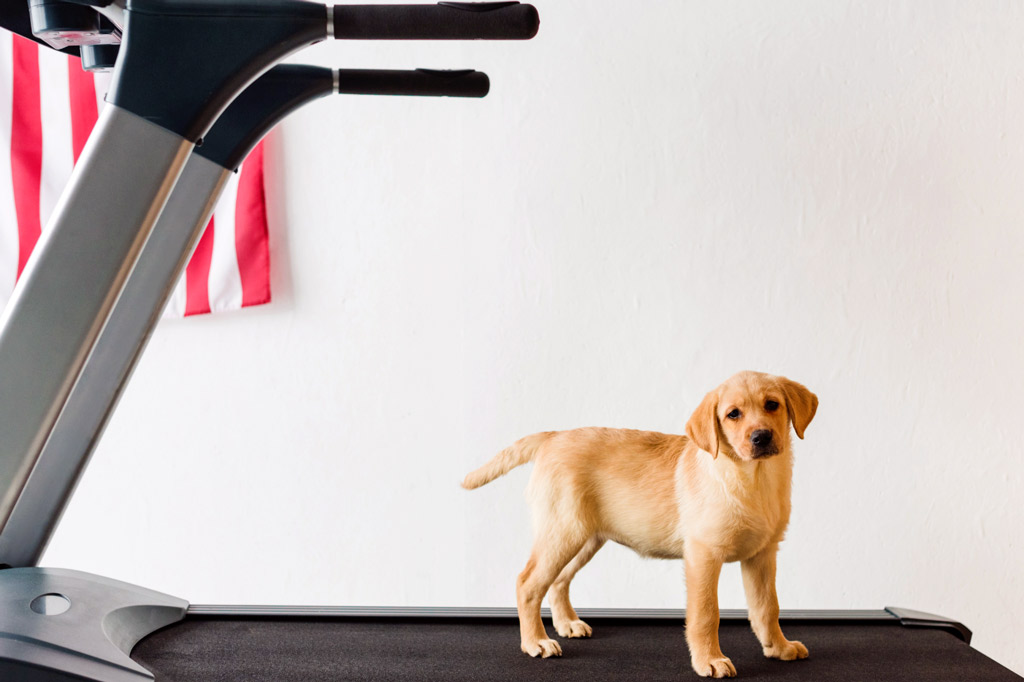
#12 – Canine Conditioning Classes Online
Canine conditioning is another type of dog exercise indoors that you can try. It involves exercises to strengthen your dog’s muscles, improve balance, and sharpen agility.
They are most commonly used for puppies and dogs involved in competitive sports. However, any healthy, high-energy pooch can benefit from them. Plus, they are online classes (like fitness programs for people). Here are three platforms that I know about: E-training For Dogs, FitPAWS and Fenzi Dog Sports Academy.
Dog Exercise Equipment: depending on the type of class, they usually tell you what you will need 😉
#13 – Playdate
Do your friends and family have dogs? Does your dog have some nice dog friends? You can invite them over for some fun playtime for a couple of hours!
This can be another way to keep your dog entertained and active. You can give them a couple of squeaky toys and they will have lots of fun together. It’s pretty much guaranteed that your pooch will be tired by the end of the day.
Be careful to move any valuable items away from the playing area since having two dogs play together can get a little rough!
Dog Exercise Equipment: squeaky toys, for example.
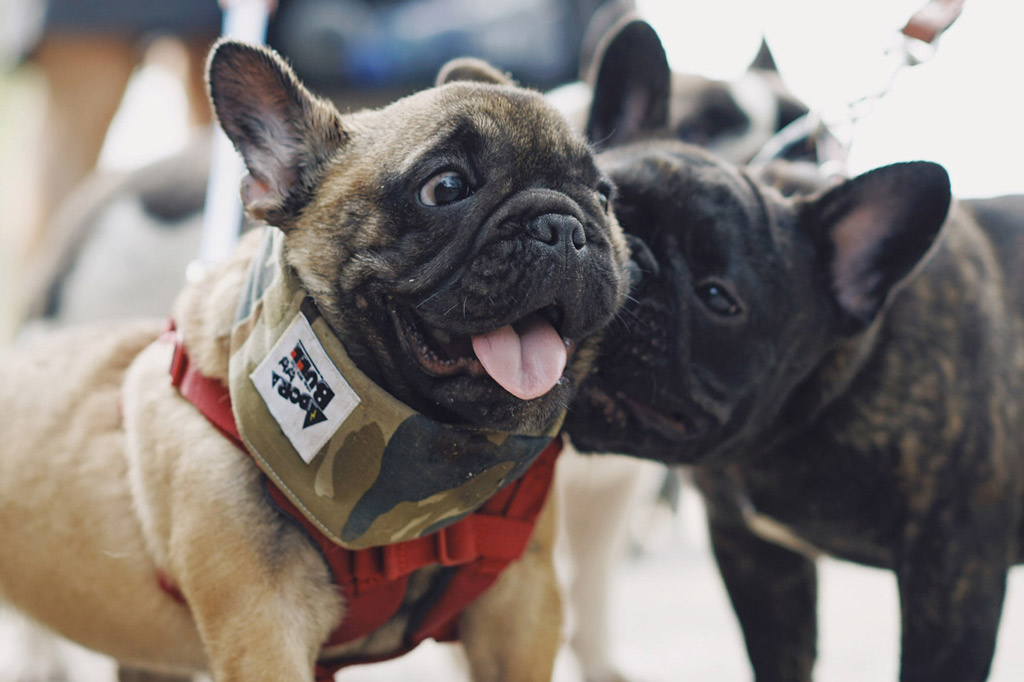
#14 – Pass the Puppy Game
This could be a great game for the whole family to play or to have some fun with your dog lover friends.
Here’s how to play this game:
- Enlist a few volunteers.
- Give everybody a small handful of treats.
- Have your players sit on the floor in a circle, with a bit of distance between each person. If your doggy is big, then everyone can stand instead.
- Then, one at a time, each person calls your pooch by name.
- When your dog arrives at each lap, each person should praise, treat and pet her.
- Let everyone have a go. When the next person calls your pooch, that’s the cue for the current person to stop interacting with her.
You could take this game outdoors to a fenced area and have the players spread out further.
Insider Tip: This game could be a great way to play with your dog when having visitors in the house. Your dog will be calmer if she can greet new people in an orderly manner, avoiding jumping around due to excitement.
Dog Exercise Equipment: not needed.

Other Dog Activities Indoors
There are also some dog activities indoors that you can try, outside the comfort of your home:
# 15 – Indoor Dog Park
As an outside your home option, indoor parks are very popular. You can try a local indoor pet centre or indoor dog park.
These places offer great exercises for dogs and are perfect for socialization as well. What can you expect?
- Toys.
- Jumps.
- Tunnels.
- Sleep areas.
- A fly-ball play zone.
- Artificial grass walks with park benches, etc.
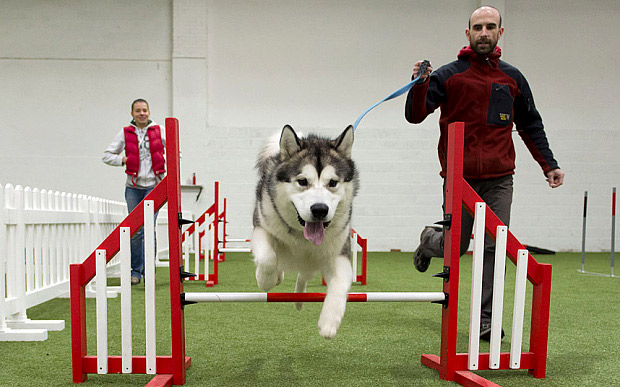
#16 – Swimming Classes
If your dog enjoys swimming and you have access to water, swimming classes can be a great solution for you and your pooch.
Swimming is great exercise and a very quick way to tire out your dog. As a word of caution, doggie life jackets should be a must, regardless of how good of a swimmer your dog is.
P.S. If you are not sure if your dog can swim, check out How Smart Are Dogs? And 9 Other Facts To Know blog post (Fact #9 – Can All Dogs Swim?)

#17 – Training Classes
There are a few classes for dogs that you can attend:
- Obedience Class: This is a type of class that is most often associated with dog training. It’s great to brush up on learned commands, learn new tricks and socialize your dog.
- Behavioural Class: Its goal is to change unwanted habits and behaviour in your dog. Some common behavioural problems are excessive barking, chewing and housebreaking.
- Agility Class: This is appropriate for dogs who will participate in dog sports, like obstacle courses, racing, or jumping.
- Vocational Class: This is catered to dogs that can learn how to herd, hunt, do search and rescue work, assist the disabled, become a therapy dog, or even work with law enforcement. Also, some of these programs are suited for specific breeds.
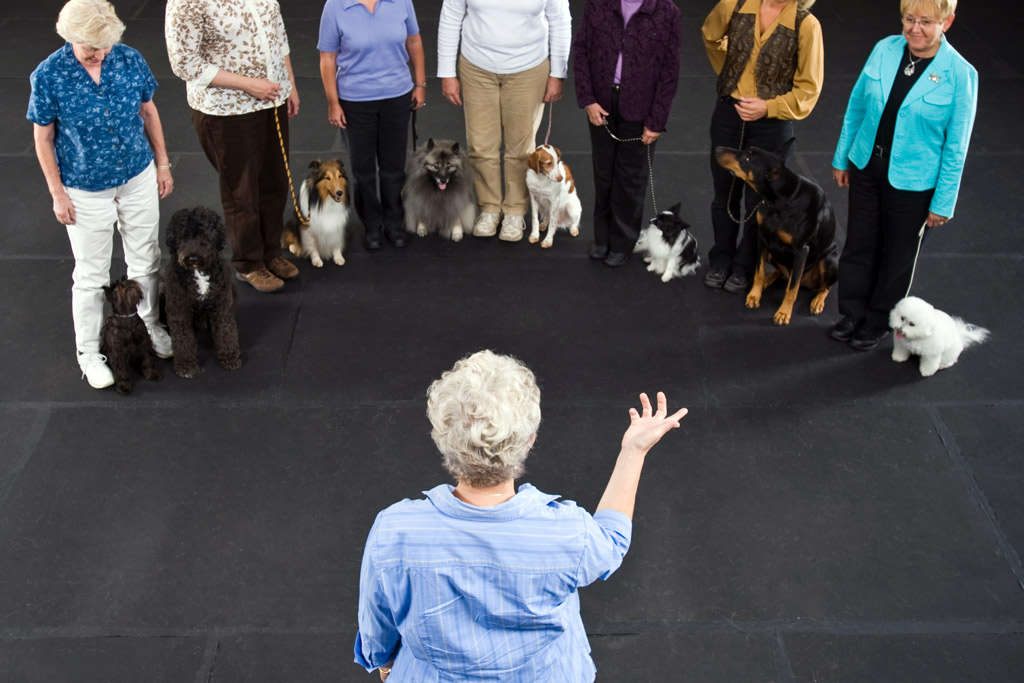
#Bonus – Massage
While massage certainly does not count as exercise (don’t we wish!), it is extremely beneficial for your dog’s health, flexibility and circulation. Fancy giving your cute pooch a treat?
Here are some benefits of doggy massage:
- Increases oxygen flow to the blood (i.e., improves circulation).
- Relieves pain and muscle tension.
- Alleviates anxiety and reduces stress.
- Improves immunity.
- Creates a great bond between you and your dog.
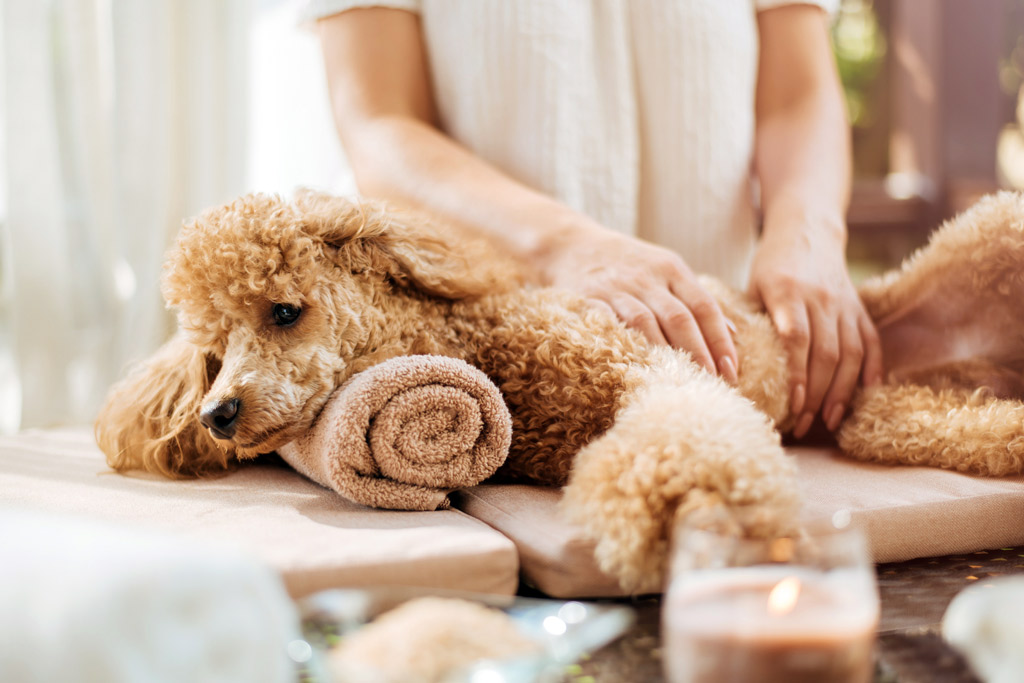
P.S. For outdoor activities, head on over to Dog Exercise Outdoors blog post and have fun!
